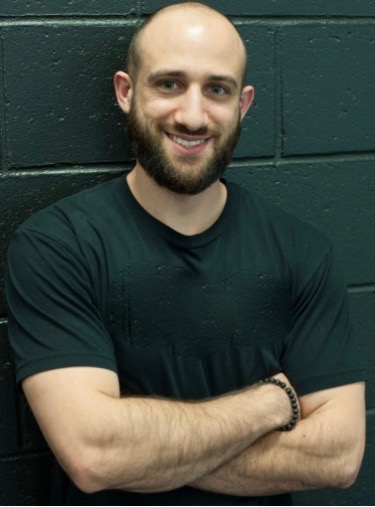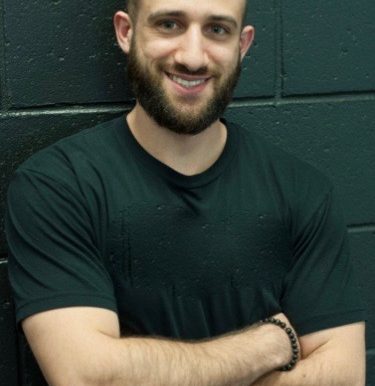All I have to say is that this article would have helped me tremendously if I had access to it the week I started my first personal training gig out of college.
Looking back I was such a mess.
Excellent guest post today by NY-based (Capital district) strength coach Mike Sirani.

3 Choices All Coaches Must Make
As a student or aspiring professional, you’ll often hear that preparation is the key to success. If you put in the hours studying and practicing, you’ll surely reap the rewards later on.
Flash-forward a couple years later: you’ve graduated school and just finished your first session with a personal training client.
Do you still feel like the above statement rings true?
The answer is likely no. Nothing can prepare you for your first time training another human being — not all the anatomy, physiology, chemistry, or Call of Duty you spent hours on in college.
Why’s this the case?
You’re now being asked to combine the science with the art. You can write the perfect program and explain all of the physiological adaptations that will come from it, but what happens when your client steps into the squat rack for their first set and the first five reps look as coordinated as a Charles Barkley golf swing?
What you choose to do next will either make you look like a Jedi genius or make you seem confusing and unhelpful. In the above scenario, you have three choices to improve the client’s technique:
- Cue the individual and see if it improves their technique
- Regress the exercise and see if the movement improves
- Use a corrective exercise to break down the movement and help the client get a better grasp on what they should be doing.
Below, we’re going to review these three choices and discuss when it’s best to use each of them, depending on the individual, their personality, and the setting they’re training in.
Choice #1: Cueing

This should always be your first option to correct an exercise as a strength coach or personal trainer.
Anyone can move around and sweat on their own. It’s your job to coach and educate clients on the correct way to do an exercise in order to help them reach their goals faster and stay healthy while doing so.
Good cueing is something that most clients will take note of and appreciate. A great coach will keep these short and sweet and cater to the client’s learning style, whether that’s:
- Auditory
- Visual
- Kinesthetic
Understanding the client’s personality type can also make cueing more effective.
If a client has a Type A personality, they may want more details about the exercise and why you’re making certain corrections. Someone who’s more laid back may simply want to be told a correction and then left alone.
Remember, this is where the science and the art meet. The more people you train, the better intuition you’ll develop as to what amount of cueing is too much vs. too little, whether to give internal or external cues, or if a specific cue works or not.
Choice #2: Regress the Exercise
What happens when you’re cueing and what you’re trying to convey isn’t registering with your client? This can result in a frustrated client, but hopefully you don’t let it get to this point. If you sense it’s heading in this direction, there’s nothing wrong with regressing an exercise.
Regress the back squat to a front squat, or the push-up to an incline push-up.
When regressing, it’s important to put the regression into context for the client.
This helps keep their confidence up and set the stage for progressing back to the exercise you originally programmed. Let them know why you’re regressing it, how the regression will improve their technique, and what needs to be done to progress back to the original exercise.
Regressing an exercise is also a strategy that may be utilized more quickly in a group setting when you don’t have the same amount of time to cue someone, like you would in a semi-private or one-on-one setting.
Choice #3: Use a Corrective Exercise
Too often, coaches will skip choices one and two and move right into bringing clients through the gamut of corrective exercises.
If you feel like a client needs a laundry list of correctives, it’s more beneficial to refer them out to a physical therapist or another healthcare professional that can better handle their issues. That way, you can use regressions to ensure the client continues getting a training effect when they’re with you, while the physical therapist helps get them back on track towards progressing specific exercises.
I have found using corrective exercises beneficial in certain scenarios, such as speeding up a client’s motor learning of a specific movement via chunking (breaking bigger movement down into component parts).
Let’s say a client is having a hard time learning the deadlift.
You’re giving excellent cues and have regressed the client from the trap bar to a Kettlebell Deadlift. However, their technique still isn’t pretty. Here, I may break down the movement with two corrective exercises.
One is used to teach the client to extend through their thoracic spine, while the other teaches movement at the hips without movement in the lumbar spine.
Thoracic Extension on Foam Roller
Hip Hinge Teaching Tools
In Summary
Unfortunately, there’s not one quick fix to improve someone’s technique on any exercise. There are too many variables in play for it to be that simple.
Appreciate the science of a program and spend time in the coaching trenches making choices from the three options above. The more you’re forced to make that choice, the better artistic instinct you’ll develop, and the better you’ll be at quickly making the best choice with a client.
About the Author
 Mike Sirani is the Co-Owner of Capital District Sport and Fitness in Round Lake, NY. He’s an experienced strength and conditioning coach and massage therapist who has spent the majority of his career in Boston training professional, collegiate, and high school athletes of various sports, as well as helping general fitness clients of all backgrounds learn to move better and get stronger than ever before. He earned his Bachelor of Science Degree in Applied Exercise Science, with a concentration in Sports Performance, from Springfield College and completed a highly sought after six-month internship at Cressey Sports Performance. Mike specializes in teaching athletes and general fitness clients to get the most out of their bodies by enhancing their movement quality and creating exercises programs that allow you to get stronger, faster, and more powerful in a safe and effective manner.
Mike Sirani is the Co-Owner of Capital District Sport and Fitness in Round Lake, NY. He’s an experienced strength and conditioning coach and massage therapist who has spent the majority of his career in Boston training professional, collegiate, and high school athletes of various sports, as well as helping general fitness clients of all backgrounds learn to move better and get stronger than ever before. He earned his Bachelor of Science Degree in Applied Exercise Science, with a concentration in Sports Performance, from Springfield College and completed a highly sought after six-month internship at Cressey Sports Performance. Mike specializes in teaching athletes and general fitness clients to get the most out of their bodies by enhancing their movement quality and creating exercises programs that allow you to get stronger, faster, and more powerful in a safe and effective manner.
Facebook: Capital District Sport and Fitness
Instagram: @capitaldistrictsportandfitness
Twitter: @CDSFSportandFit



